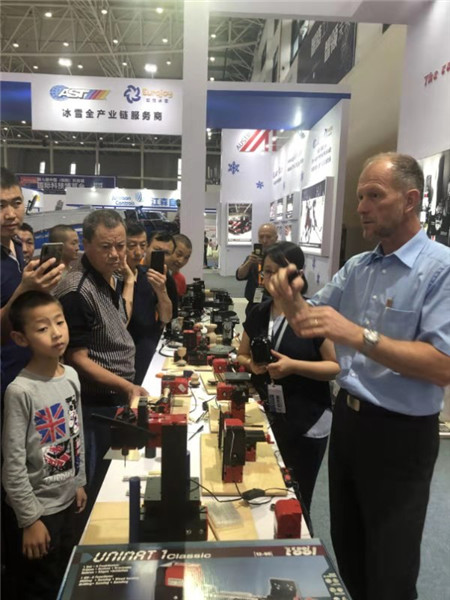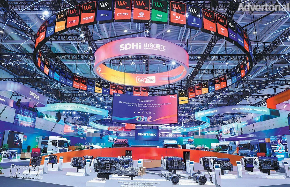13,000 top-notch products on display at high-tech expo

Visitors to the Seventh China (Mianyang) Science and Technology City International High-Tech Expo in Mianyang, Sichuan province, are impressed with examples of independent controllable computers, high-performance graphic workstations and displays of commercial micro-nano satellite manufacturing.
They are some of 13,000 state-of-the-art technological products being showcased by 687 domestic and overseas high-tech firms and institutions in the four-day expo which started on Sept 5.
Co-sponsored by the Ministry of Science and Technology and the Sichuan provincial government, the four-day expo has a total exhibition area of 70,000 square meters with exhibitors from 28 countries and regions.
Representatives from 27 Austrian firms and research institutions are attending the expo with Austria as the chosen national guest of honor.
The Austrian business delegation displayed its cutting-edge technologies and products, and took the opportunity to share exchanges with its Chinese counterparts on Sept 5, Austrian Technology Day.

Sponsored by the Ministry of Science and Technology and the Sichuan provincial government, the expo was held in 2013 for the first time and has contributed positively to Mianyang's economy, said Liu Chao, the city’s Party chief.
Mianyang, the second-largest city in Sichuan, was China's only science and technology city approved by the central government in the year 2000.
Mianyang's reputation as a leader in science and technology has grown in recent years, but the city's involvement in the sector actually stretches back decades.
It is home to many key research institutes and enterprises with national defense contracts, such as the China Academy of Engineering Physics, which developed the country's first nuclear bomb.
Several organizations in the city have successfully adapted military technology for commercial markets.
Many of Mianyang’s research institutes and enterprises were set up during the Third Front Movement, a major industrial program launched in 13 inland provinces and autonomous regions in 1964.
In the face of soured Sino-Soviet relations and threats from the United States, which had been staging military exercises in the Taiwan Straits, the movement involved large-scale investment in national defense, technology, manufacturing and transportation in China's interior.
Thanks to development during the Third Front Movement, Mianyang was ideally placed to lead the charge in the integration of civil and military industries when the country launched reform and opening-up in the late 1970s.
Sichuan Jiuzhou Electric Group, established in 1958, developed China's secondary surveillance radar system, a tool for detecting and measuring the position of aircraft. Now it makes a variety of commercial products such as broadband network devices and digital television equipment.
Shanghai-listed tech company Sichuan Changhong Electronic Co, also set up in Mingyang in 1958, is another example of the integration.
In 1982, top leader Deng Xiaoping called on the national defense industry to allow military enterprises to make products for civilian use. Soon after, Changhong, which made firing control radar for planes, started to research, develop and produce TV sets.
Today, Changhong is one of the country's best-known home appliance makers, with a brand value of nearly 121 billion yuan ($17 billion), according to World Brand Lab, an independent consultancy based in New York.
The company has contributed to Mianyang's position as one of China's major centers for electronics and the electronic information industry.

























